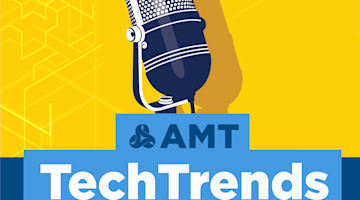They’re among the critical opportunities and issues shaping the industrial Internet of things, which is the focus of the November webinar of the Manufacturing Tech Council. There’s no shortage of hype around the IIoT, with projections of billions of devices throwing off petabytes of information that savvy manufacturers can mine to reduce operational and maintenance costs, improve product quality, customer service and manufacturability, and even create new data-based revenue streams.
And this is not the stuff of science fiction. Manufacturers like GE, Airbus, Monsanto, Caterpillar and others are already reaping significant benefits from their commitment to IIoT and deep analytics/machine learning efforts. A great case in point is GE, which is not only using IIoT data to drive its digital twin initiative – creating digital replicas of physical products like jet engines and wind turbines in order to improve performance and get ahead of maintenance issues – but has also created a platform that helps customers manage their own IoT projects.
As we head into 2019, here are some key things to watch in the IIoT space:
5G wireless. The fifth generation of cellular wireless is beginning to emerge in the market and it promises much higher data rates than 4G, lower latency, and support for many, many more devices – all of which is good news for IIoT. This piece in NetworkWorld.com does a good job outlining the benefits of 5G for IIoT applications, as well as some of the challenges we’ll face in capitalizing on 5G. A really savvy Network World contributor, my old friend Craig Mathias, does a good job here explaining what 5G is and how it differs from previous generations of wireless here.
'Fog’ and edge computing. A challenge in real- or near-real-time analytics is being able to process information as close as possible to its source. Edge computing refers to the ability to handle analytics and other data processing chores at the ‘edge’ of the network, out at a remote site or retail outlet, for example. ‘Fog’ is a somewhat newer term that describes computing in the space between the edge and core data centers. You can find a great overview of fog computing here, courtesy of the OpenFog Consortium. Hardware manufacturers like HPE and IBM are retooling their systems for the edge, while cloud providers like Amazon and Microsoft push their computing, data and analytics capabilities closer to the data sources. Rather than waiting for thousands or millions of data streams from connected devices to be shipped up to a central data center for processing, powerful new edge and fog capabilities will enable safety, maintenance and support decisions to be made in an instant locally.
Security. There’s always a fly in the ointment or a worm in the apple – pick your metaphor. More connected devices, more data, more reliance on that data to drive your business add up to more security challenges. In conversations with top business, manufacturing and technology leaders, security continues to lead the pack among concerns about embracing IIoT. It’s not an insurmountable challenge, and the good news is that there’s a slew of emerging companies and traditional security vendors working hard to solve the problems. (We spotlighted one such emerging IIoT security company, CENTRI, for MTC members recently.) But security is a key issue you’ll need to address in your IIoT strategy. This piece, from IBM’s DeveloperWorks site, does a good job of outlining the facets of the IIoT security challenge.
Fog/edge, 5G, security, and digital twins are just a handful of the big issues and opportunities that will take shape in 2019 in IIoT. Learning more about them now – and about how leading-edge manufacturers are capitalizing on IIoT to change their business trajectories – is a great way to head into the new year.




